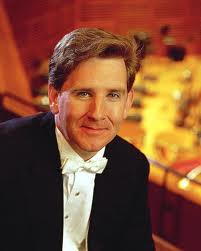|
Choral and Vocal
CELEBRATORY MARIN ORATORIO CONCERT AT THE JAMES DUNN THEATER
by Abby Wasserman
Saturday, December 14, 2024
Symphony
MAHLERTHON AT SRS WEILL HALL CONCERT
by Peter Lert
Sunday, December 8, 2024
Chamber
UNIQUE TRIO FOR THE ROMANTIC ERA IN SONG
by Pamela Hicks Gailey
Saturday, November 16, 2024
Chamber
JASPER'S LUSH PERFORMANCES OF STILL, DVORAK AND FUNG QUARTETS
by Abby Wasserman
Sunday, November 10, 2024
A SHOUT AND SONIC WARHORSES AT NOVEMBER'S SRS CONCERT
by Peter Lert
Saturday, November 9, 2024
ECLECTIC WORKS IN CANTIAMO SONOMA'S SEASON OPENING CONCERT
by Pamela Hicks Gailey
Sunday, October 27, 2024
Symphony
FRANKENSTEIN THRILLS IN UNIQUE SO CO PHIL CONCERT IN JACKSON THEATER
by Peter Lert
Saturday, October 26, 2024
Choral and Vocal
BAROQUE EXTRAVAGANZA AT AMERICAN BACH MARIN CONCERT
by Abby Wasserman
Friday, October 25, 2024
Recital
LARGE AUDIENCE HEARS AX IN WEILL PIANO RECITAL
by Terry McNeill
Thursday, October 24, 2024
SRS' NEW SEASON OPENS WITH BEETHOVEN AND COPLAND IN WEILL
by Terry McNeill
Saturday, October 19, 2024
|
 |
 Conductor Alasdair Neale |
FIERY AND SPIRITUAL RUSSIAN WORKS OPEN MARIN SYMPHONY SEASON
by Kate Gilpin
Sunday, November 1, 2015
The Marin Symphony’s season opening concert has been a high point of North Bay musical life since Eisenhower was president. The theme in this 63rd year is “Hear and Now,” and the Nov. 1 gala held at the Marin Center Auditorium was auspicious. The Symphony’s longtime music director, Alasdair Neale, conducted.
You can’t beat the Russians for spectacle, and this program featured two of the most beloved works in the great Russian Romantic canon, Rachmaninoff’s D Minor Piano Concerto, composed in 1909, and Tchaikovsky’s Symphony No. 5 from 1888.
The Rachmaninoff is known for its technical difficulty as well as its soaring beauty, and was performed wonderfully by the Russian pianist Gleb Ivanov. The Rachmaninoff 3rd Concerto is a richly rewarding work, from the enchanting folk-melodic opening theme of the first movement Allegro through the work’s labyrinth of development and elaboration. The Intermezzo-Adagio movement, with its opulent theme and variations, is a languorous piece that includes its own cadenza-like section as well as an irresistible waltz passage that Chopin and Ravel might have approved. This lovely second movement transitioned seamlessly into the high-spirited third, with its quotations from the earlier movements. Mr. Ivanov played with brilliance and fire, thrilling in the more technically challenging sections of the work, though he could have given a more meditative and lingering interpretation to the slower sections.
The packed house responded with a standing ovation, and Mr. Ivanov played Debussy’s Reflets dans l’eau as an encore, and it was all water, like a deep sigh after the fire of the Rachmaninoff Concerto.
Following intermission the Tchaikovsky E Minor (Op. 64) was heard. It’s an epic work, a cyclical composition like the F Minor Fourth Symphony, where the major themes are repeated in all four movements, appearing in altered forms again and again. Before raising his baton the conductor addressed the audience, reminding them that there has been a “tradition” over the years for audiences to confuse the long fermata that occurs about two-thirds of the way through the final movement with the end of the work. He requested that the audience wait until his hands were actually at his sides at the end of the piece before applauding. Hilarity ensued and the large audience was happy to cooperate.
The performance was inspiring. The famous notes from the clarinets in the opening Andante-Allegro draw back the curtain of a saga as surely as if they were saying “Once upon a time . . .” As the ideas unfolded they evoked feelings of war, revolution, turmoil, and passion in a way that had seldom been heard before in a Tchaikovsky symphonic work. Throughout the four movements, that eight-note theme returned, changed by added meaning. Heroism, romance, it was all there in this performance.
The concert featured beautiful solo work, including a truly singing horn solo from Darby Hinshaw in the second Andante cantabile movement and precise wind playing throughout. The third-movement Valse combined grace and verve, along with the composer’s melodic spirituality. The fourth movement, with its striking but transformed theme (from the first movement) now in the Major, was played with a majesty and nobility. The ensemble delivered a rich and shining rendering of this work, renowned for its trajectory of tragedy to triumph.
It was a hugely satisfying opening to what promises to be a banner season for the Marin Symphony.
|
